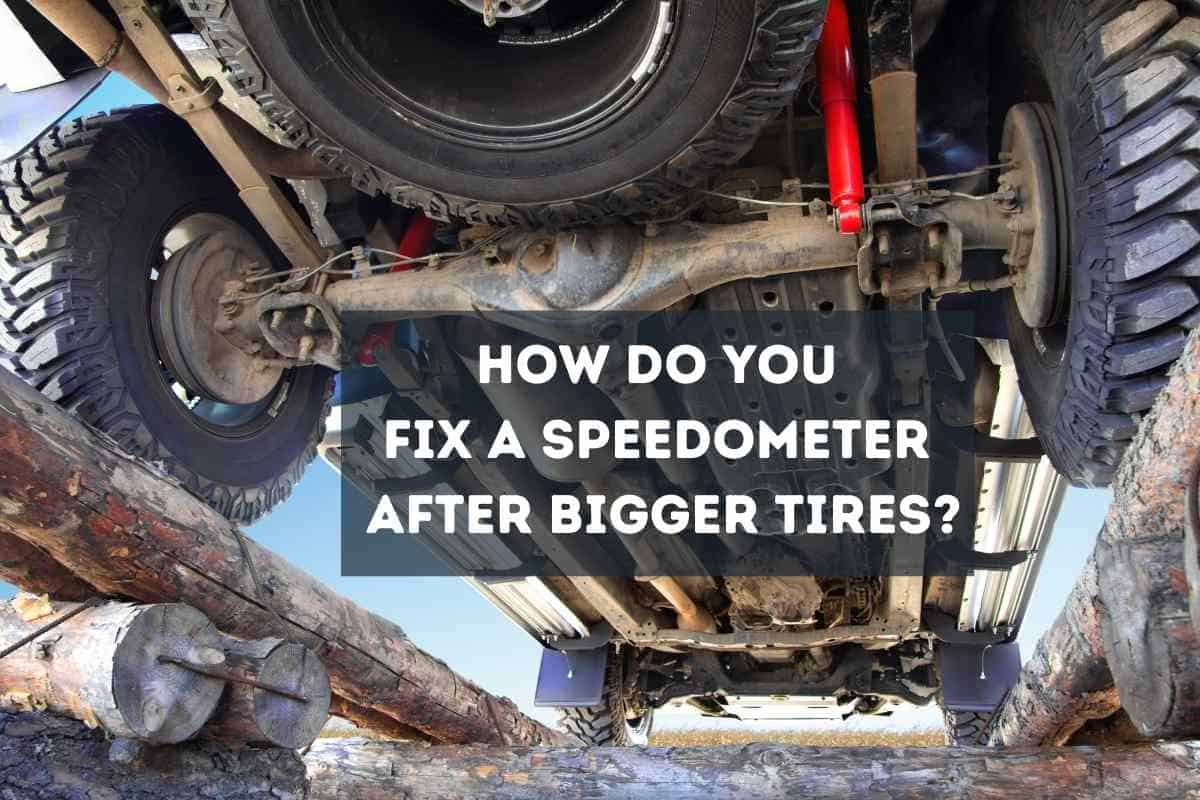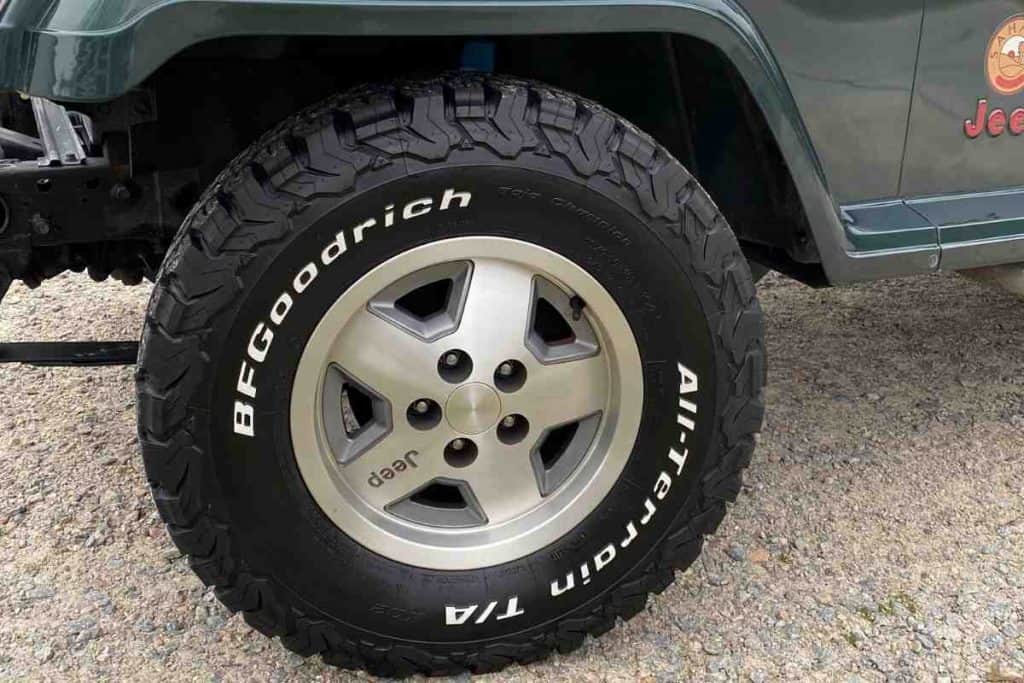Calibrate Speedometer For Bigger Tires: Mechanical And Digital
Replacing your vehicle’s tires with bigger ones is not bad. It improves handling, cornering, decreases cornering distance, and increases acceleration. But it is essential to know that using bigger tires would alter your speedometer calibration, and you may need to recalibrate it to get an accurate reading of your vehicle’s speed.

A speedometer will read a speed slower than the vehicle’s actual speed when you replace your standard tires with larger ones.
You may need to calibrate your vehicle’s speedometer after replacing your tires with new ones, especially if the new tires are of different sizes.
There are two types of speedometers, mechanical speedometers and electronic speedometers. Each is calibrated using a different method. The following is a guide on how to calibrate the two types of speedometers.
How To Adjust Speedometer For Bigger Tires: Mechanical Speedometer
To adjust your analog speedometer gauge for bigger tires, first, count the number of teeth on the drive gear. Then, calculate the tire’s number of revolutions per mile, then replace the old driven gear with the right one.
Calibrating a mechanical speedometer is a complex process. One may need the help of a technician since it involves replacing some parts.
Step 1- Count the number of Teeth on the Drive Gear.
You start by locating your transmission. Transmission can be pin-pointed by opening the hood or lifting your vehicle and searching for it from the bottom. The speedometer cable is normally bolted on the transmission’s tail shaft. Unbolt the speedometer cable from the tail shaft.
Remove the gear housing cover by unbolting the screw holding it in place. Using an adjustable spanner would be quicker than any other spanner. You will see two gear. The speedometer cable is attached to the driven gear, while the drive gear is attached to the transmission.
Count the number of teeth on the drive gear and note down.
Step 2- Calculate the Tire’s Number of Revolution Per Mile.
Determine the diameter of your wheel by measuring from the top to the center of the wheel. Then multiply this value by two to get the diameter. To get the tire’s revolutions per mile, divide 20,168 by the diameter of the tire.
Step 3- Replace the Old Driven Gear with the Right one.
Multiply the tire’s number of revolutions per mile by the value of the number of teeth on the drive gear. Then multiply the value you get with the axle’s ratio. The axle’s ratio is normally found on the vehicle’s manual or inside the vehicle’s glovebox. Divide what you get with 1,001.
The value you get is the number of teeth of the driven gear needed so that your speedo gives accurate vehicle speeds. Provide your local dealership with the number of teeth of the driven gear, the make of your vehicle, model and model year of your car to ensure they deliver the right gear.
Replace the old gear with the right one and attach the speedometer cable at the right place. Return everything to its position.
How To Adjust Speedometer For Bigger Tires: Electronic Speedometer
Identify the speedometer calibration button and press-hold, crank your vehicle and then release the button. Push the button and drive the distance recommended by the manufacturer. After driving, press the button again, and the speedometer will automatically calibrate itself.
Electronic speedometers are easy to calibrate. Manufacturers always provide the distance of the test drive needed for speedometer calibration. This information is normally available in the owner’s manual.
What are the Advantages of Bigger Tires?
Improved Grip and Traction
Larger tires have a larger surface area in contact with the track.
This enhances grip and traction and improves the vehicles handling. Bigger and thinner tires offer more traction on snow.
Enhances Cornering
Bigger wheels with wide threads and stiffer walls offer more road contact enhancing cornering at high speeds. This is the main reason racing cars have more massive and wider wheels.
Improved Breaking
Big tires will offer more surface contact with the track. This enhances braking and reduces braking distance.
Better Appearance
Vehicles with bigger and wider tires look better than those with smaller tires.
What are the Disadvantages of Bigger Tires?
Hard Steering
A larger tire has more contact with the surface making it very hard to steer. A larger tire also means more weight to be turned by the steering system.
Increased Fuel Consumption
Installing bigger tires would increase the weight to be turned by the engine, leading to more fuel consumption. But this weight increase would not have any effect on vehicles with powerful engines.
Increased Tire Wear
Larger tires wear out faster due to lower sidewalls, wheel scraping, and stiff steering.
Inaccurate Speedometer Reading
Installing a larger wheel without calibrating your vehicle’s speedometer would result in inaccurate readings. Calibration may require the replacement of driven gear, which may be more expensive.
Safety System Warning
Various safety warnings would appear on the dash due to the wrong tire size. Since the wheel speed sensors work together with the engine control unit, traction control, and the ABS, you may get an ABS or traction control warning light.
What’s on My tire’s wall?
Many people get confused about what the letters and numbers on the side of their tire wall stand for. We will use a case study to explain what these letters and numbers stand for and how to determine the size of your wheels. Let’s assume your wheel is numbered P215/65R/15 95H.
Tire Type
The first letter “P” refers to the standard to which the tire is made. The tire is a P-metric tire, the standard used in the United States. This standard shows that this tire is designed for passenger vehicles. If the tire starts or ends with the letter “LT,” this means the tire is designed for light trucks. Always refer to your owner’s manual to know which type of tire is suitable for your vehicle.

Tire Width
Tire width is the distance between the two sidewalls. The first three digits represent the tire width in millimeters. In our case, the tire width is 215 millimeters.
Aspect Ratio
The Aspect ratio is the ratio of the height of the tire cross-section to its width. The two-digit number after the backlash mark represents the tire’s aspect ratio. The larger the ratio, the bigger the aspect ratio.
Construction
They are various types of tire construction. It may be radial, basic, ply, etc. “R” stands for radial, which means the tire is layered radially.
Wheel Diameter
The two-digit number after the letter “R” is the diameter of the wheel in inches. In our example, the wheel is 15 inches in diameter.
Speed Ratings
The last letter on your tire label represents a certain speed on the speed chart. This shows the stopping power of the wheel.
Tires with high-speed ratings have better stopping power and less durable threads.
- Q- 160 km/h
- S- 180 km/h
- T- 190 km/h
- U- 200 km/h
- H- 210 km/h
- V- 240 km/h
- W- 270 km/h
- Y- 300 km/h
- (Y)- Above 300 km/h
In this case, the last letter is H, meaning the speed rating is 210 km/h.
Factors to Consider Before Buying a New Tire?
Tire Width
Tires with a broader profile offer more grip than those with a narrow profile.
Tire Profile
Tires with high profile offer a comfortable ride and provide more protection. Tires with a low profile are prone to the same. They give a rough ride but are better looking and enhance steering performance.
Manufacturer’s Warranty
Different manufacturers offer different warranty terms. There is often a list of damages that a warranty can cover. Some manufactures offer a very narrow list of damage that their guarantee can cover, while others cover more. Always check the terms of a warranty before buying.
Tread Pattern
There are three types of treads; symmetrical, directional, and asymmetrical. Symmetrical tires offer quiet performance but offer substandard grip on rainy weather. Asymmetrical tires perform well in rains as they disperse the water well but are more expensive. Directional threads function best in rains but produce so much noise.

Conclusion
Installing bigger tires improves acceleration, handling and makes your vehicle look good, but it is essential to recalibrate your speedometer to get correct vehicle speed readings.
Thank you for reading this article. Please feel free to comment and share.
